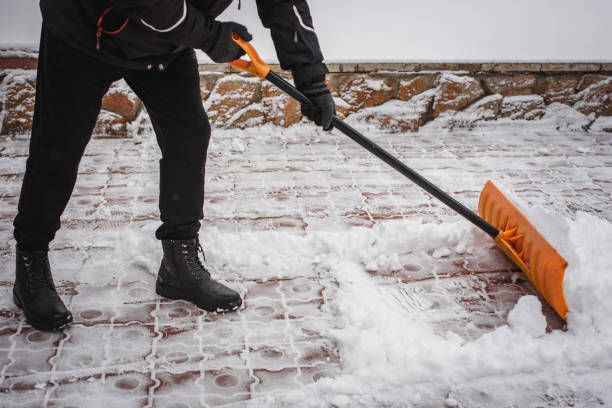It’s a lot of fun for children to build snowmen, go sledding or have snowball fights. But the frozen water not only brings joy – especially for homeowners, but heavy snowfall can also turn into work.
Even if snow exudes a particularly romantic atmosphere in nature, it is disturbing in urban areas. It clogs roads and paths and creates a high risk of injury from slipping, as the ground becomes icy and slippery. This is why snow removal is so necessary. Overall, it contributes to road safety and enables comparatively quick progress even in heavy snowfall.
Snow shoving during earth development is compulsory in winter. Nevertheless, there is often uncertainty about who is responsible for winter maintenance and what should be considered when clearing snow in general. What legal regulations are there for winter maintenance, and who is obliged to clear snow? Are there rules regarding the time and when you have to be liable for injuries caused by inadequate winter road clearance? You can find the answers in this guide.
In winter, the risk of injury from falls is exceptionally high – especially when the fluffy snow degenerates into smooth ice. To prevent this from happening, the snow must be cleared from public and private paths. To enable a firm step, the subsoil must also be sprinkled.
However, there is no national law on clearing snow. Different regulations may therefore apply from state to state and even from municipality to municipality. The specific regulations can be found in the local statutes, which the state road laws serve as an overarching framework. It can be seen from these that the municipalities are fundamentally responsible for clearing snow. You have to keep the traffic routes free.
But not only the municipalities are affected by the snow removal obligation by law. The municipalities can also delegate the snow sweeping to the house owners. They are then responsible for clearing the adjacent sidewalks of snow and ice so that they remain passable. Failure to clear snow is, therefore, an administrative offense and can therefore be fined.
But even without such a passage and a threat of fines in the municipal statutes, property owners must eliminate sources of danger on the adjacent sidewalks. This prescribes the so-called traffic safety obligation. Anyone who intentionally or negligently violates the life, body, health, freedom, property, or any other right of another person is obliged to compensate the other person for the resulting damage.
Winter service and snow clearing as the fulfillment of the traffic safety obligation. The traffic safety obligation is an obligation under the law. It serves to ward off sources of danger, and failure to do so can lead to claims for damages. The person who creates or maintains it is always responsible for the source of danger. He must take necessary and reasonable precautions to avoid harm to third parties.


